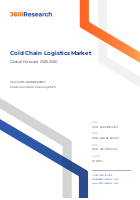
Cold Chain Logistics Market by Service Types (Storage Services, Transportation, Value-Added Services), Temperature Range (Chilled (Above 0°C), Frozen (Below 0°C)), End-Use - Cumulative Impact of United States Tariffs 2025 - Global Forecast to 2030
SKU
MRR-431388EE3B57
Region
Global
Publication Date
February 2025
Delivery
Immediate
2024
USD 222.28 billion
2025
USD 246.02 billion
2030
USD 415.01 billion
CAGR
10.96%

Download a Free PDF
Get a sneak peek into the valuable insights and in-depth analysis featured in our comprehensive cold chain logistics market report. Download now to stay ahead in the industry! Need more tailored information? Ketan is here to help you find exactly what you need.



